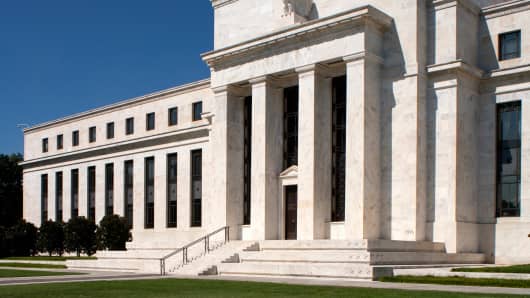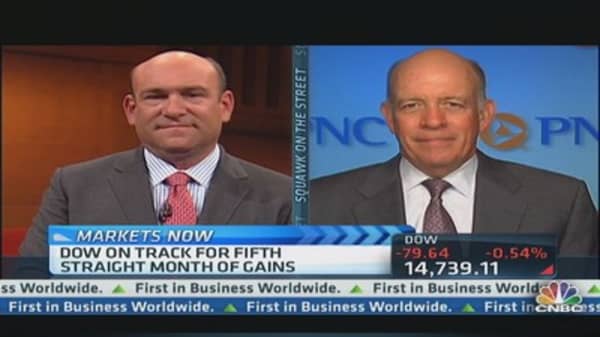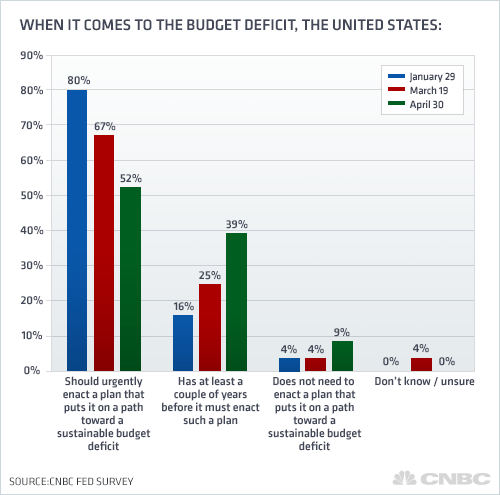"The U.S. runs a risk of over tightening fiscal policy,'' wrote Jim Paulsen of Wells Capital Management, who noted that the private sector is growing at a 4 percent annual rate. "The emergency to balance government is no longer an emergency. ... One of the biggest risks to the economy right now is that government cutbacks become too extreme and cause the economy to stall. Let's stop the public cuts and allow the economy to grow at the speed at which 'private activity' is growing ... which is about 3.5 percent."
Disagreement on the issue runs so high that there is even disagreement among those at related firms. Scott Wren of Wells Fargo Advisors wrote, "We need to have a 10-year plan to dramatically reduce deficit spending. The sequester was way too small of an amount. We need to get serious."
In total, market respondents see government tax increases and spending cuts shaving just a half point off of growth this year. The growth outlook for 2013 and 2014 remains unchanged from March at 2.1 percent and 2.6 percent respectively.
(Read More: Bernanke Watch: Is He Eyeing the Exit?)
The group as a whole is pessimistic about the outlook for stocks, believing that the best gains are behind the market. The average participant forecasts about a 1 percent decline in the S&P 500 between now and June, and just a 1.3 percent increase from current levels by the end of the year. Curiously, stocks were chosen as the best investment by 73 percent of respondents, with 62 percent choosing real estate.
The outlook for gold and the reason for its recent decline defy consensus. A third of respondents say it will be higher a year from now, and a third say lower. The recent decline was attributed to a reduced outlook for inflation, gold selling by the Bank of Cyprus and the popping of a price bubble.
Despite the expectation of more QE, doubts persist about its effectiveness. Nearly two-thirds believe it will not help lower the unemployment rate, while respondents are divided over whether it can help lower mortgage rates, with 46 percent saying it will and 44 percent saying it won't. However, by a 54 percent to 35 percent margin, the group believes QE can help lower bond yields.
The biggest threat to the U.S. economy remains tax and regulatory policy, which is the top pick of 31 percent of respondents, but that's down from 42 percent in January. The European financial crisis was the top pick of 20 percent of the group, up from 10 percent in March. Slow job growth was the top pick of 20 percent of the group,












